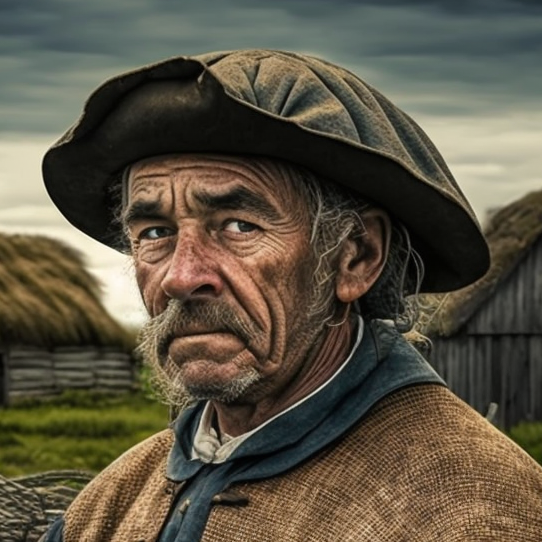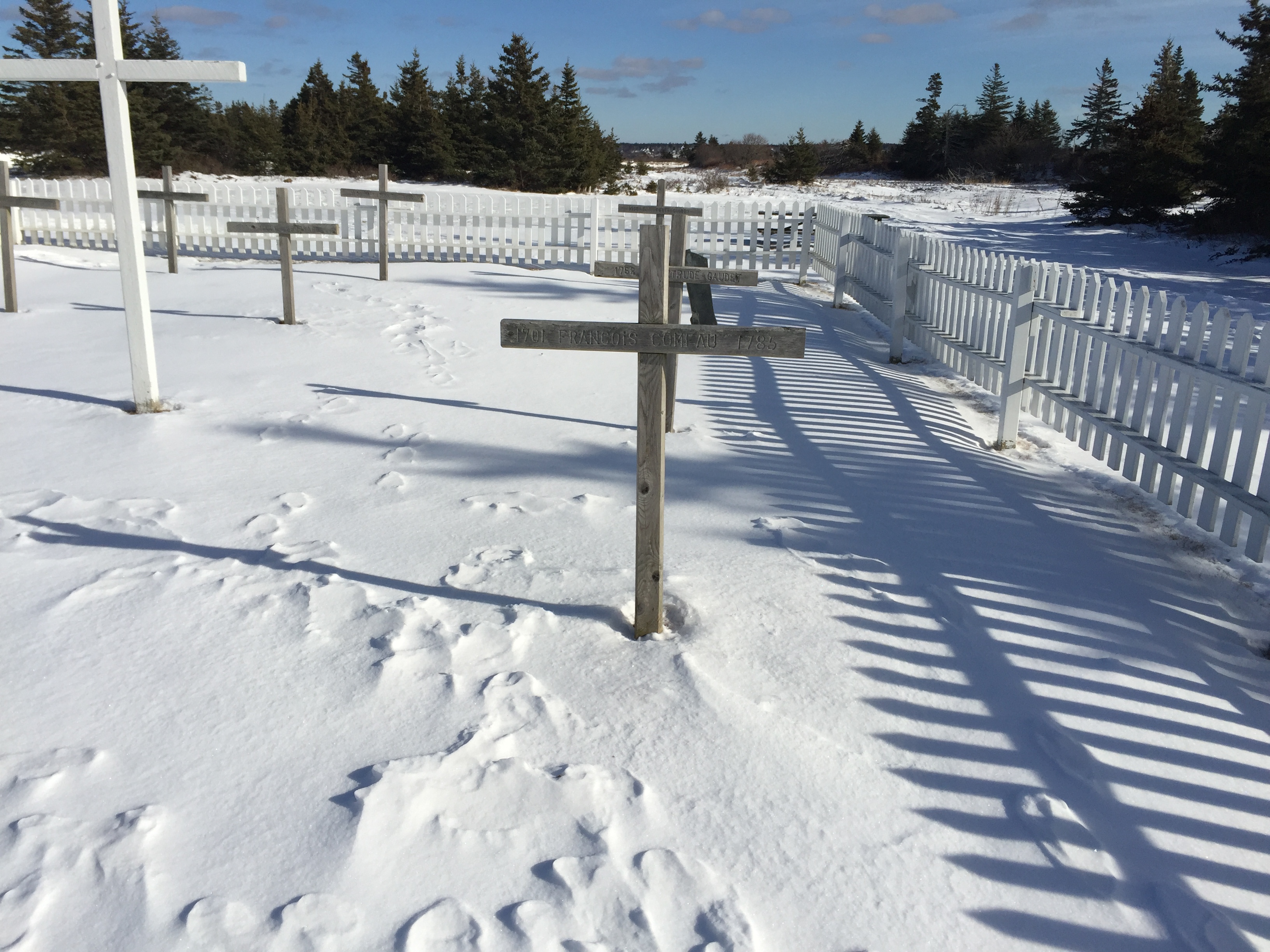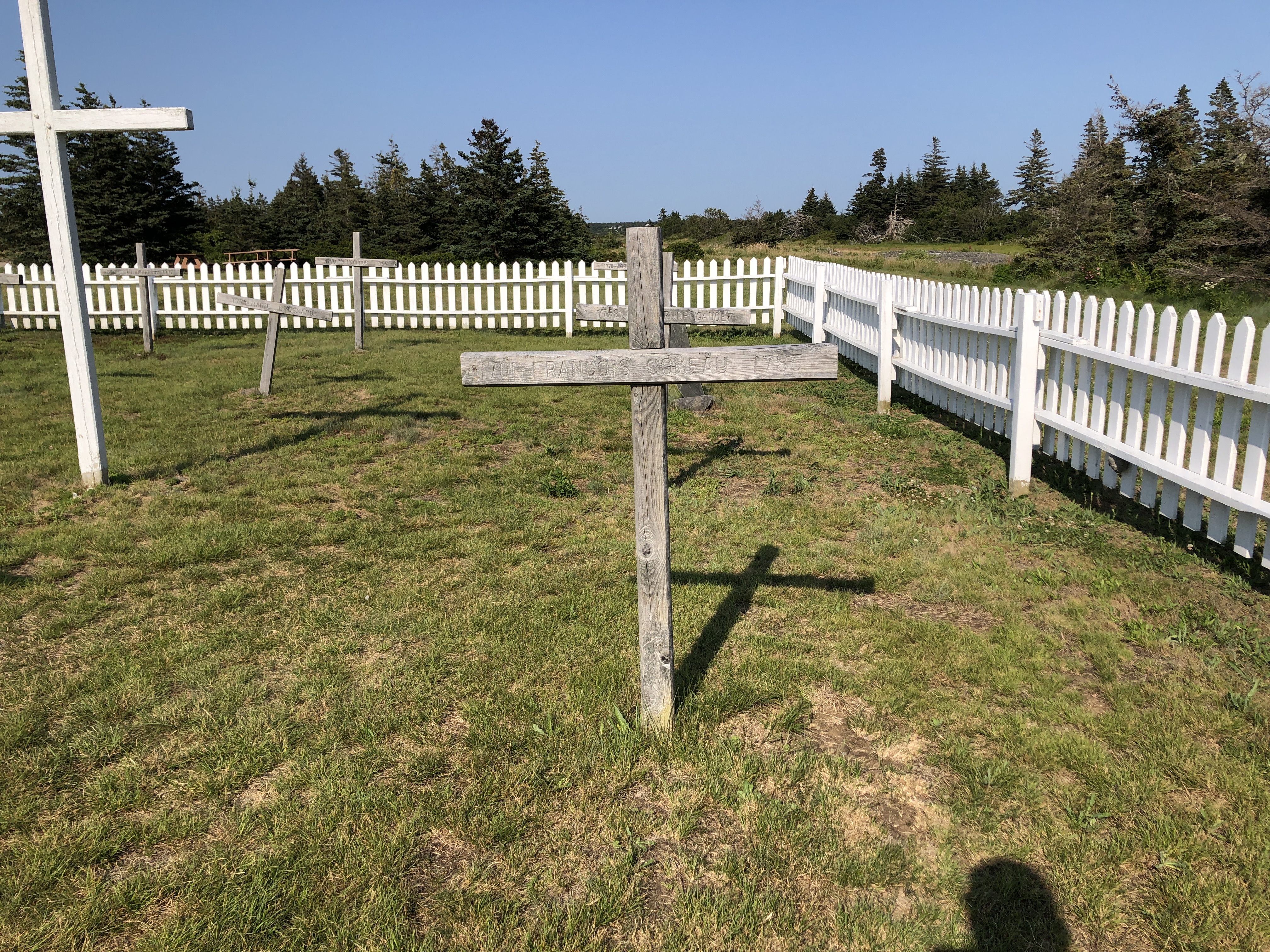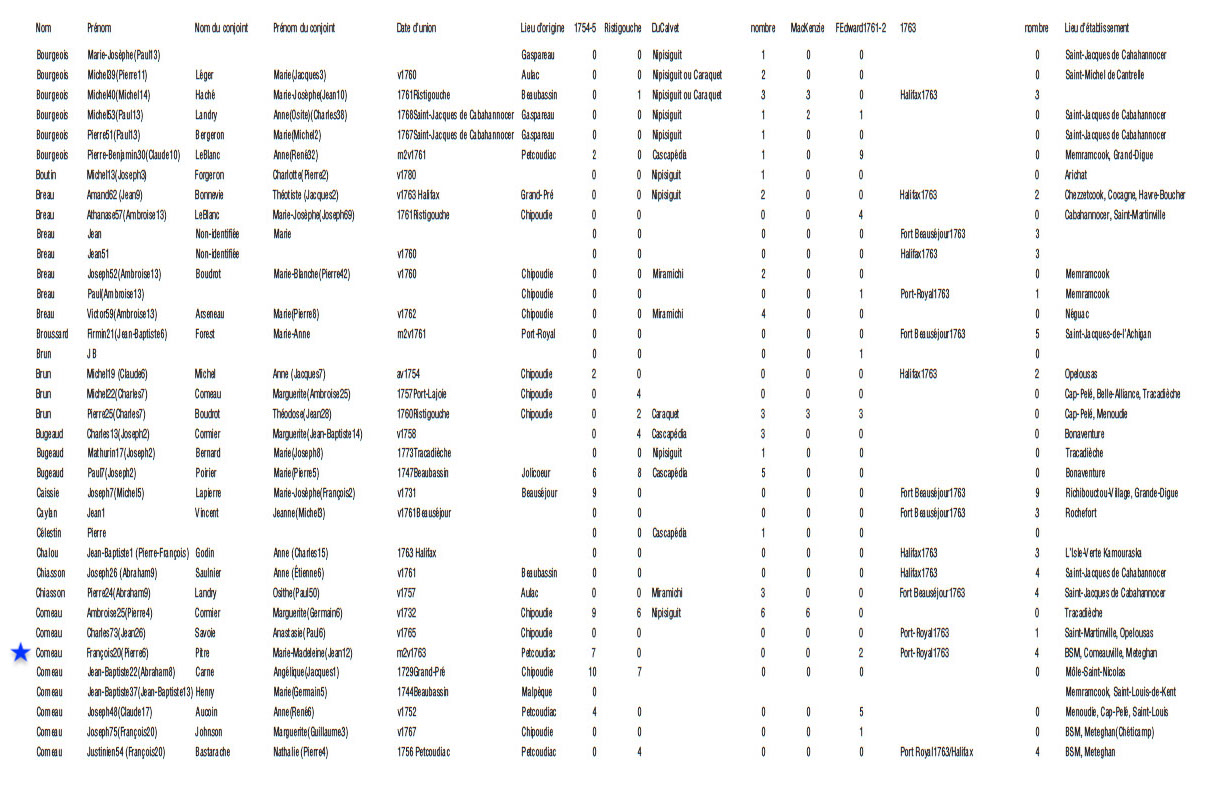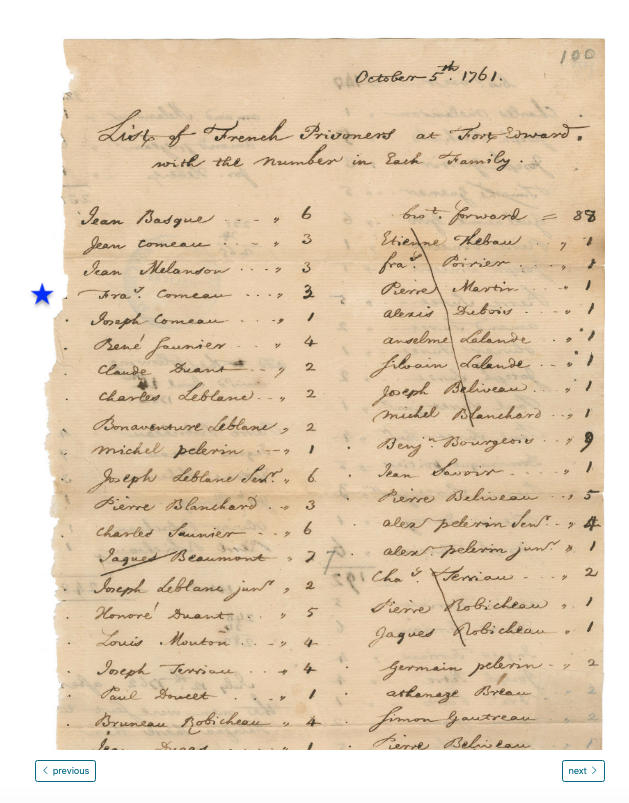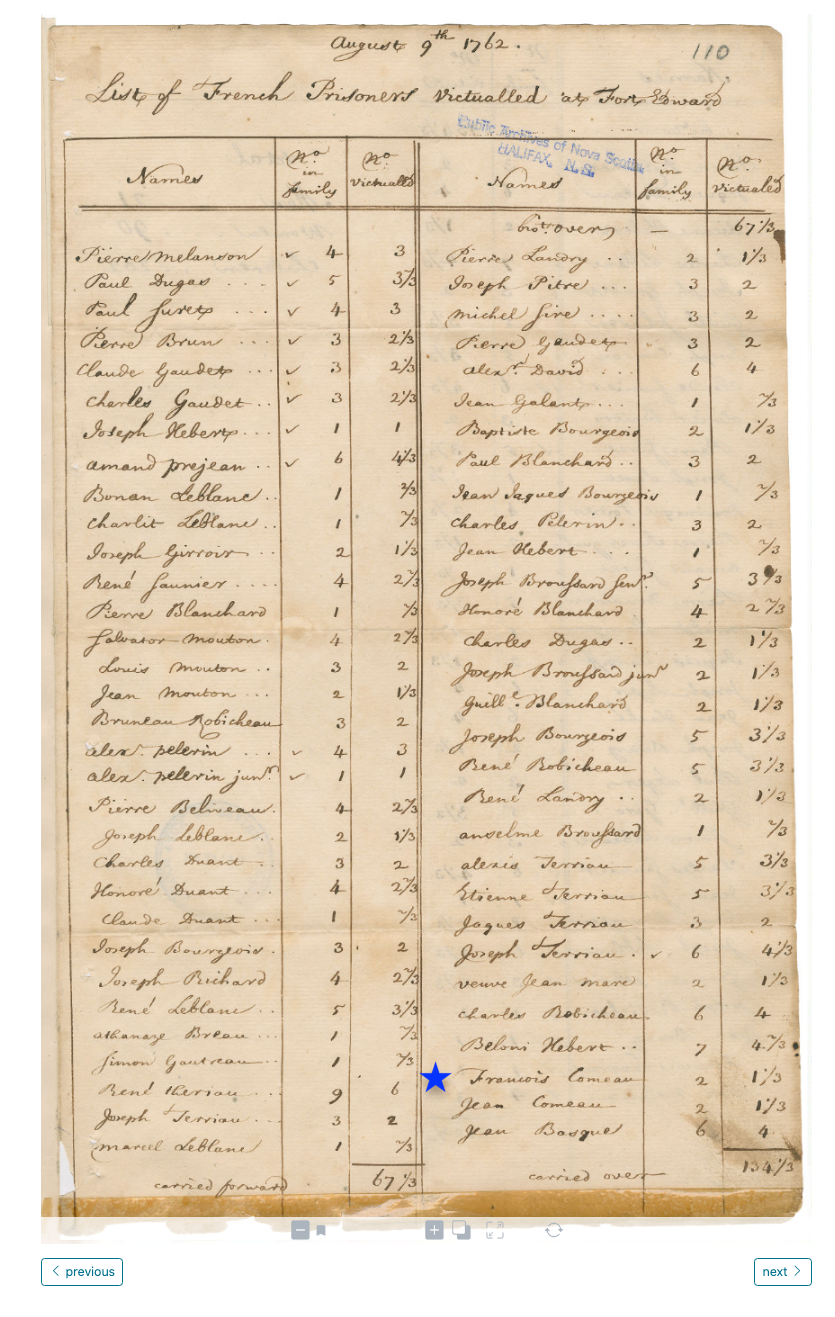François Comeau married Marie-Madeleine L'Or on 25 Feb 1726, and in 1728 they moved from Port Royal to Chignecto colony, settling on the Peticodiac river (Blanchard's colony - Hillsborough, NB). The Chignecto colony had been established in 1671 by Jacques Bourgeois, who was Francois' maternal grandfather.1
Chignecto was the scene of battles in what is now called Father Le Loutre's War, which precipated the events leading up to the Deportation of 1755. During this time the legendary Acadian resistence fighther Joseph Broussard Beausoleil rose to fame and was living along the Petitcodiac River, and would have been a neighbor of François'. It is possible François fought along side him.
The Deportation
After the deportations in the Minas basin of the Autumn of 1755, Chignecto was the centre of the Acadian resistence led by Beausoleil, and under these circumstance we see records that Francois and his family became refugees living near Cogagne at a brook still called Ruisseau des Malcontents. He is recorded as living at Camp d'Esperance at Mirimichi during 1756-572 (age 55) where he is listed as partnered with Madeleine Pitre (age 14). (It is unclear whether this list is a census or whether François is being indentified in it by genealogists through his second marriage). Most genealogies say that François and Madeleine Pitre were married 1762/63 (age 61/62 & age 20/21) and they had their son Firmin on 1 April 1764 in Annapolis Royal. It is said that François died at Firmin's house in 1785 (when Firmin would have been 21).
Forced labour in Minas
After the defeat of the French at Québec in September 1759 (the battle Plains of Abraham), the Acadians knew the resistence could no longer continue, and they began to surrender. A number turned themselves in at Fort Beausejour (renamed Fort Cumberland). By this time the scheme to settle New Englanders on the confiscated Acadian lands had begun, but the English realized they needed Acadian expertise to repair the dykes, so Lt. Gov Belcher requested the Acadians held in Halifax and Fort Cumberland be moved to Fort Edward (Windsor) and Fort Anne (Annapolis Royal). Thus in the early 1760s, we find the name of a François living at Fort Edward.3
In 1762, reports reached Halifax that the Acadian workers "had 'assumed fresh courage and began to be insolent to the settlers in the townships where they were at work, telling them that they should soon regain possession of their lands and cut every one of their throats'". Belcher declared martial law and marched all able-bodied Acadian men to Halifax under armed guard to imprison them on George's Island, and the provincial legislature passed a resolution to ship them off to Boston. Six hundred men on five ships (François and his sons undoubtedly among them) sailed to Boston on 18 August 1762, but after six weeks they returned with the prisoners. Boston had already dealt with Acadian refugees after 1755 and didn't want any more. Belcher was outraged and protested, but by the time his protests could be heard, the Peace of Paris had formally concluded the Seven Years War and the English had conquered Quebec. The Acadians now had to be accommodated. 4
Settlement in Clare
A census from 1763 shows François and his sons living in Annapolis Royal.5 Lt Governor Michael Francklin took over when Governor Wilmot died in 1767, and made land available at St. Mary's Bay, naming the area Clare in flaterry to his superior Lord Clare.6 The first settler of Clare was Joseph Dugas (who arrived on 5 September 1768 ) and he and his family made it through the first winter before the next group of settlers arrived in the spring of 1769.
Marriage Register to Marie Madeleine L'Or 22 Feb 1724
https://www.wikitree.com/wiki/Comeau-305
1,4. A Great and Noble Scheme, John Mack Faragher; p.71, 421
2. Les réfugiés acadiens au camp d’Espérance de la Miramichi en 1756-1761 :
un épisode méconnu du Grand Dérangement (spefically the Appendix image nº 3) English Translation (PDF)
3. List of French prisoners at Ford Edward, Windsor, Nova Scotia with the number in each family, 5 Oct 1761 and List of French prisoners victualled at Fort Edward, 9 Aug 1762, Isaac Deschamps papers. As there was another François Comeau ("Maza"; 1731-1819) alive at this time, it's unclear which one was recorded at Fort Edward.
5. Liste Generalle des habitans acadiens contenant les chefs de fammilles, Port Royal 1763
6. History of Clare Township – Origin of the name “Clare” (PDF)
